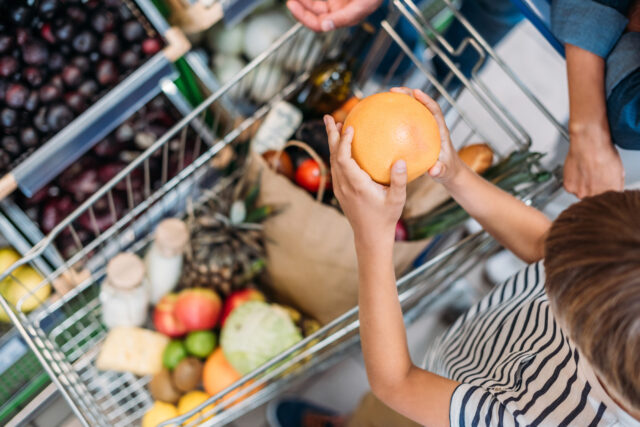Expansions to CalFresh—the state’s version of the federal Supplemental Nutrition Assistance Program (SNAP)—cushioned the impact of major shocks to the economy and helped reduce poverty during the pandemic. Now that the federal public health emergency is ending, many of these expansions are being rolled back. What can policymakers learn about the impact of these expansions on financial well-being?
At the beginning of the pandemic, the federal government temporarily altered several SNAP policies, creating flexibility in reporting processes, expanding college student eligibility, increasing benefits by 15% from January 2021 to September 2021, and issuing emergency allotments from April 2020 to March 2023. The allotments initially allowed states to give all participants the maximum monthly amounts, regardless of household income. Since benefits are designed to decrease as income rises, this change gave families with the highest incomes the biggest boost, while those with the lowest incomes did not see increases because they were already getting the maximum. The policy was adjusted in April 2021 to give all households a boost of at least $95.
In October 2021, just after the 15% benefit increase expired, the US Department of Agriculture increased SNAP amounts after revising its Thrifty Food Plan. This permanent adjustment boosted monthly assistance by about $12 to $16 per person. (SNAP benefits are also adjusted each fall to account for inflation, which bit deeply into the real value of benefits during the pandemic.)
One way to understand how these expansions affected California’s low-income households is to determine how poverty levels might have changed had these expansions been implemented before the pandemic. We estimate that in 2019, emergency allotments alone would have kept about 350,000 Californians out of poverty (reducing poverty by 0.9 points), and increases based on the changes to the Thrifty Food Plan would have kept 110,000 out of poverty (a 0.3 point reduction). These estimates rely on the 2019 California Poverty Measure (CPM), using a CalFresh caseload comparable to that year.
Under this scenario, the first iteration of emergency allotments, which provided the maximum grant for each household size, would have increased monthly CalFresh benefits by 62% ($80 per person), on average. The revised allotments, which ensured at least a $95 boost, would have had a smaller impact (a 6% increase), as would the changes to the food budget calculation (which would have resulted in an 18% increase). Emergency allotments would have increased benefits by 69% overall, and all of these changes together would have doubled CalFresh benefits, providing an average increase of $120 per month per person.
These increases had a particularly dramatic impact on families in deep poverty, who relied on CalFresh for nearly a third of their total resources in 2019. Emergency allotments alone would have reduced the share of CalFresh families in deep poverty by 15%, and the share between 50% and 100% of the CPM poverty threshold by 13%, if they had been implemented in 2019. Benefit increases from the Thrifty Food Plan changes would have been similarly distributed, but with smaller impacts. As a result, the share of families above (but still close to) the poverty threshold would have increased.
Most pandemic-era SNAP policies have already expired, and others, such as expanded college student eligibility, will end soon. But policymakers can learn from these and other measures that kept many low-income families out of poverty—and from what happens when these measures expire. This year’s reauthorization of the federal Farm Bill, which sets the rules underlying CalFresh, offers an opportunity to evaluate expiring policies and take new steps toward reducing both food insecurity and poverty.






